Your Complete Guide to Green Beans: From the Garden to Your Plate
I’ve spent a huge part of my life around green beans. First, it was in the controlled chaos of professional kitchens, and later, in the peaceful quiet of my own garden. This journey has given me a serious appreciation for what most people think of as a simple side dish. Honestly, a lot of folks get tripped up by the names—are they string beans, green beans, or haricots verts? The answer is pretty straightforward, but it tells a story about the bean itself.
In this article
In the kitchen, we just called them beans, but we knew the score. We knew which ones needed a quick blanch for that perfect snap and which ones could stand up to a long, slow braise without turning to mush. Later, in the garden, I finally understood why. I saw how different varieties grow and how things like sun and soil can totally change their flavor and texture. This guide is me sharing all that hard-won knowledge with you, so you can pick, prep, and cook green beans like you’ve been doing it for years.
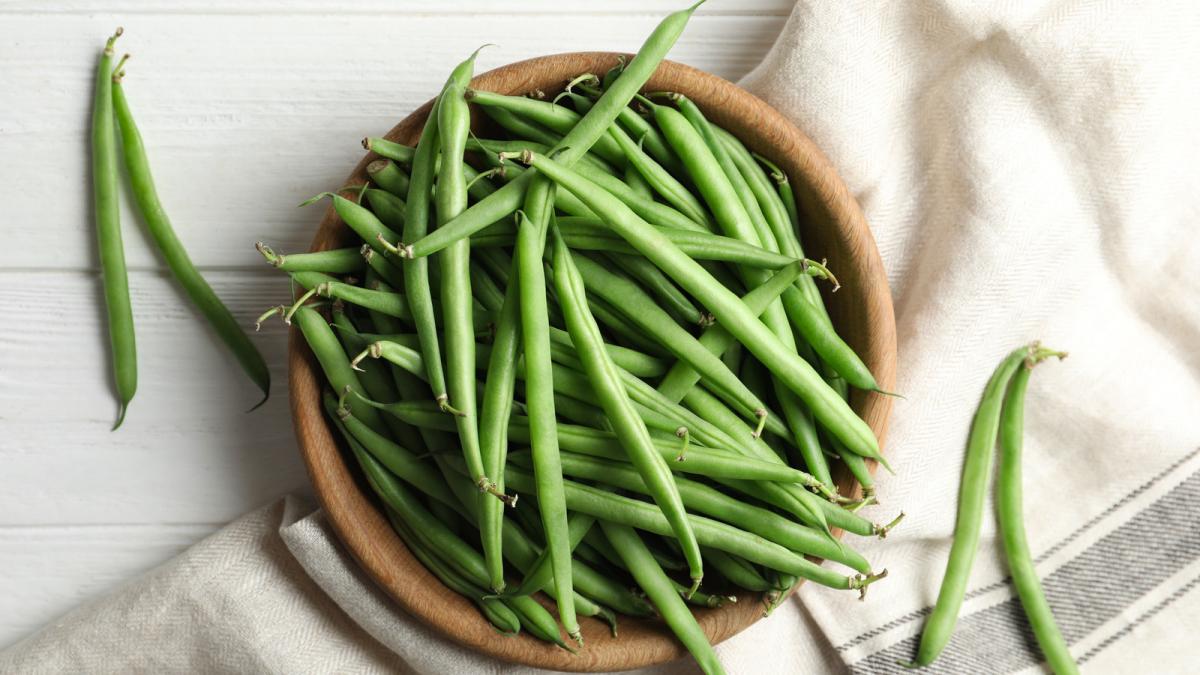
What’s the Deal with the “String”?
To really get it, you have to look at the plant. The green beans we eat are technically the immature pods of a plant called Phaseolus vulgaris. If you left them on the vine, the pods would dry up and the seeds inside would become the dry beans we all know, like kidney or pinto beans.
Now, about that infamous “string.” It’s a tough, fibrous thread that runs right down the seam of the pod. In older, traditional varieties, this fiber was a real pain. You had to pull it off every single bean before cooking, which, trust me, gets old fast. You’d snap the end and zip the string all the way down.
So what happened to the string? Well, thanks to some pioneering plant breeders a long time ago, a stringless bean was developed. Their work completely changed the game. Today, almost every green bean you buy in a major supermarket is stringless. The name “string bean” is now mostly a nostalgic throwback, a term people use interchangeably with “green bean.”
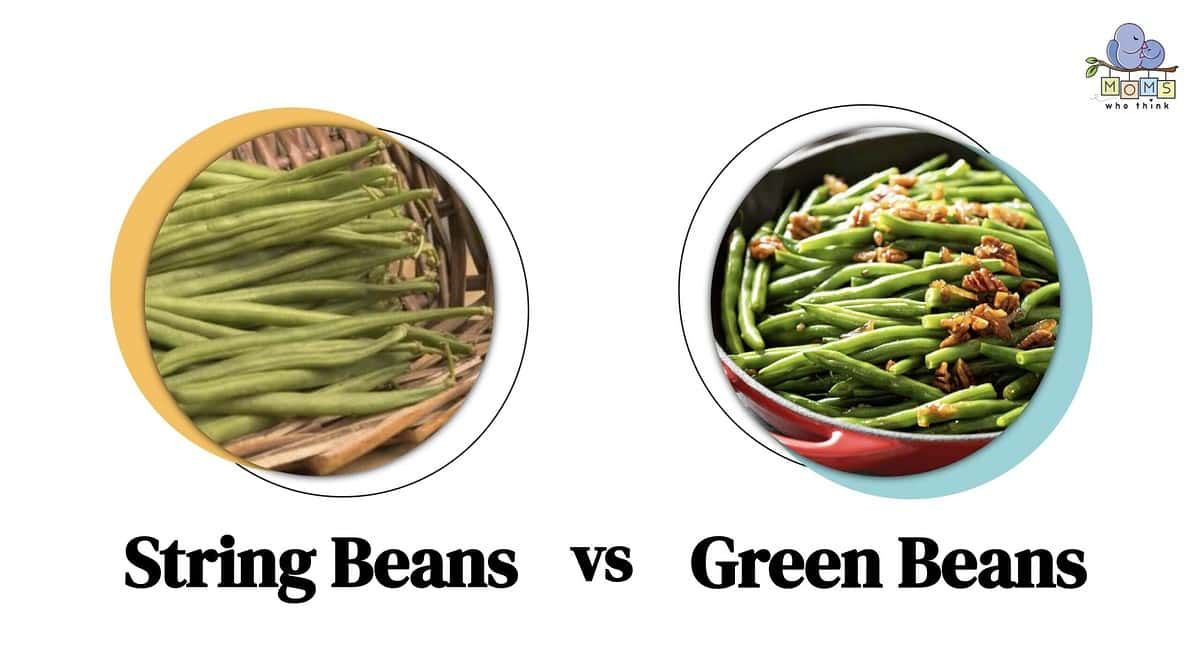
Bush Beans vs. Pole Beans
Besides the string, the way the plant grows is a huge deal, especially for gardeners. You’ve got two main players:
- Bush Beans: These guys are compact, growing in a little bush that’s usually about two feet tall. They don’t need any support, which is nice. They also tend to produce their whole crop in one big burst over a few weeks. This is super handy if you’re planning a big canning or freezing session.
- Pole Beans: Just like the name says, these are climbers. They’re vining plants that need a trellis or fence to scramble up, and they can get seriously tall, sometimes over eight feet. Pole beans produce fewer beans at any one time, but they keep going for a much longer season. A lot of chefs and gardeners (myself included) swear they have a richer, more complex flavor.
A Pro’s Guide to the Beans You’ll Actually See
Walk through a good farmers’ market and you’ll see that “green bean” is a massive category. Knowing the difference is the key to amazing results. Not sure how much to buy? A good rule of thumb is a big handful per person, which works out to about 1/4 to 1/3 of a pound (around 125-150g). Better to have a few leftovers than not enough!
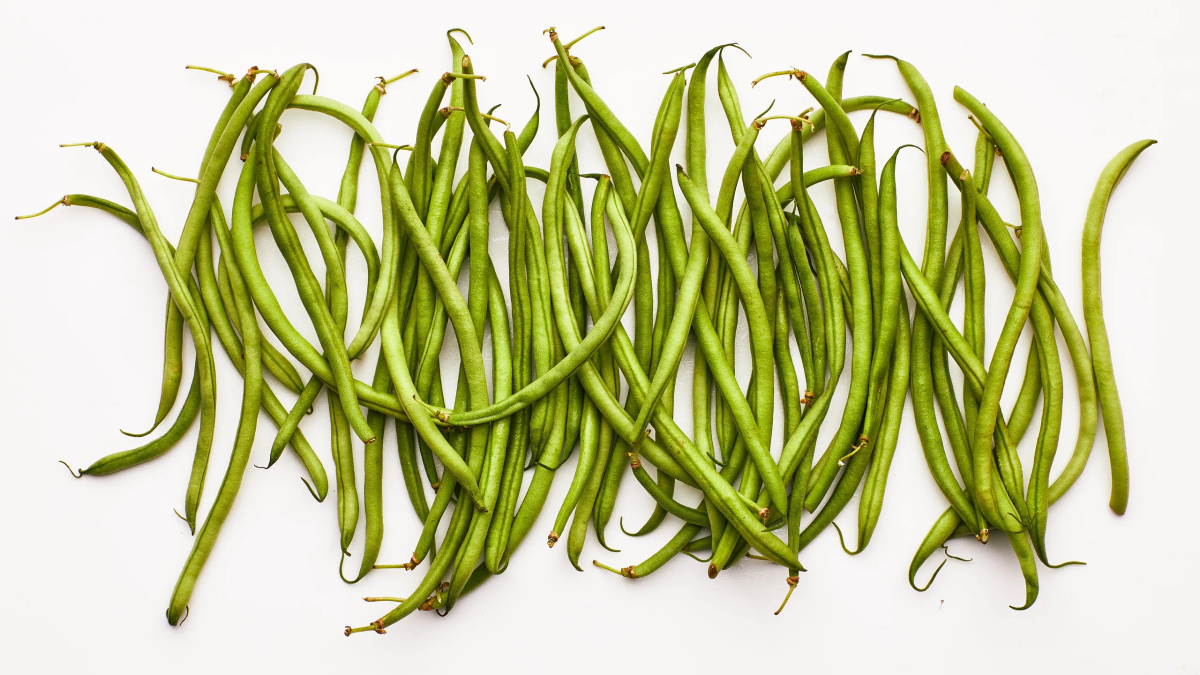
The Classic American Green Bean
This is your standard, do-it-all green bean. It’s round, crisp, and has a bright, grassy flavor. They are sturdy enough for something like a casserole but are also fantastic just steamed with a little butter and salt. As a general guide, expect standard green beans to be the most budget-friendly, usually around $2-$4 per pound.
When I’m picking these out, I look for a vibrant, even green color and a firm, plump pod. The ultimate test? The snap test. A fresh bean should break cleanly with a sharp snap. If it just bends or feels rubbery, it’s old. Put it back.
Fancy French Beans (Haricots Verts)
Okay, so haricots verts is literally just French for “green beans.” But in the food world, it means something specific: those super thin, delicate, and frankly, elegant beans. They’re harvested earlier to make sure they’re extra tender.
These were our go-to in the restaurant for a beautiful side dish. They cook in a flash—you have to be careful not to overcook them. A quick 90-second dip in boiling salted water is often all they need. Because they’re so delicate, they are a terrible choice for stews or long-cooked dishes. Their delicate nature also means they’re a bit of a splurge, often running $5-$8 per pound.
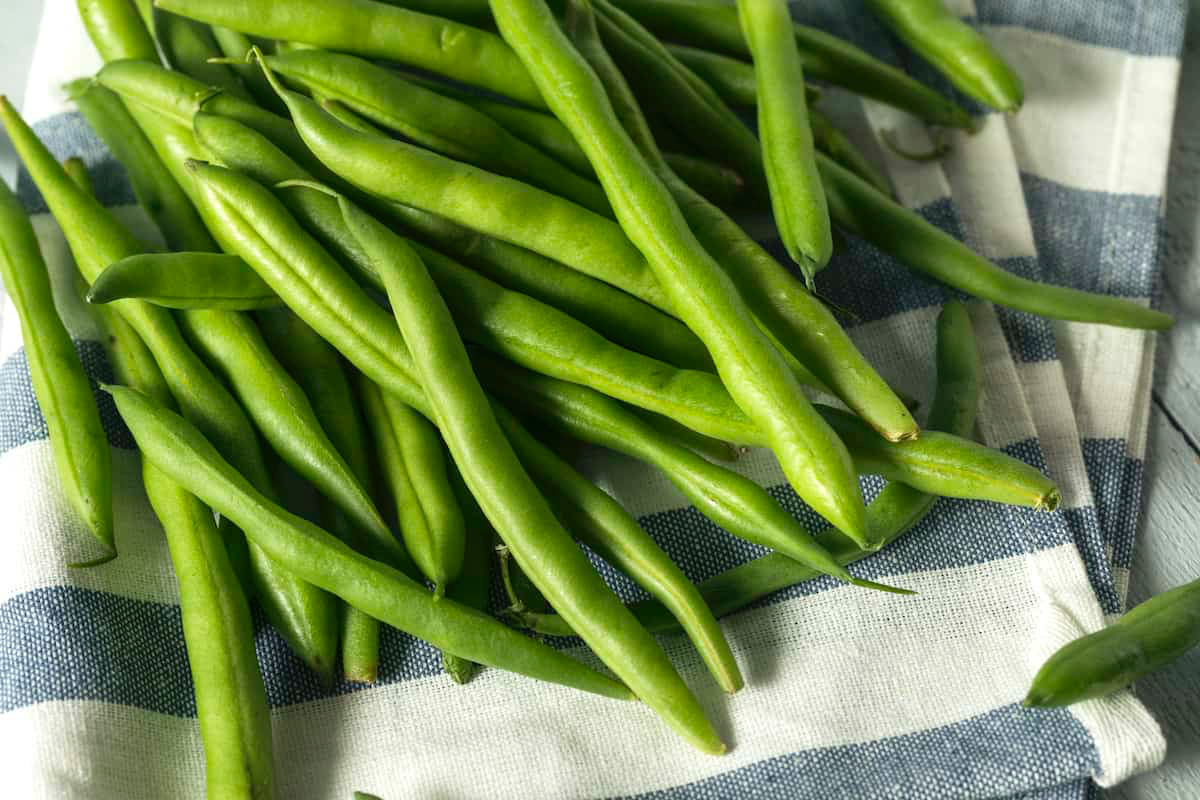
Hearty Italian Romano Beans
Romano beans are a personal favorite. They’re the big, flat ones, and they have a wonderfully dense, meaty texture and a deep, savory flavor. Because they’re so sturdy, they are begging to be braised. Seriously, a slow simmer in a simple tomato sauce with garlic and herbs makes them unbelievably tender and delicious.
I learned this the hard way once in the kitchen. A new cook, trying to be fast, tried to quick-blanch some beautiful Romano beans like they were haricots verts. They came out tough and leathery. A total waste. It was a great lesson: you have to respect the bean and cook it the way it wants to be cooked.
Colorful and Heirloom Beans
Working with heirloom varieties is just plain fun. You might find beans with beautiful purple streaks or pale yellow ones with purple mottling. A heads up: these often have strings, so they take a bit more prep work, but the incredible flavor is your reward.
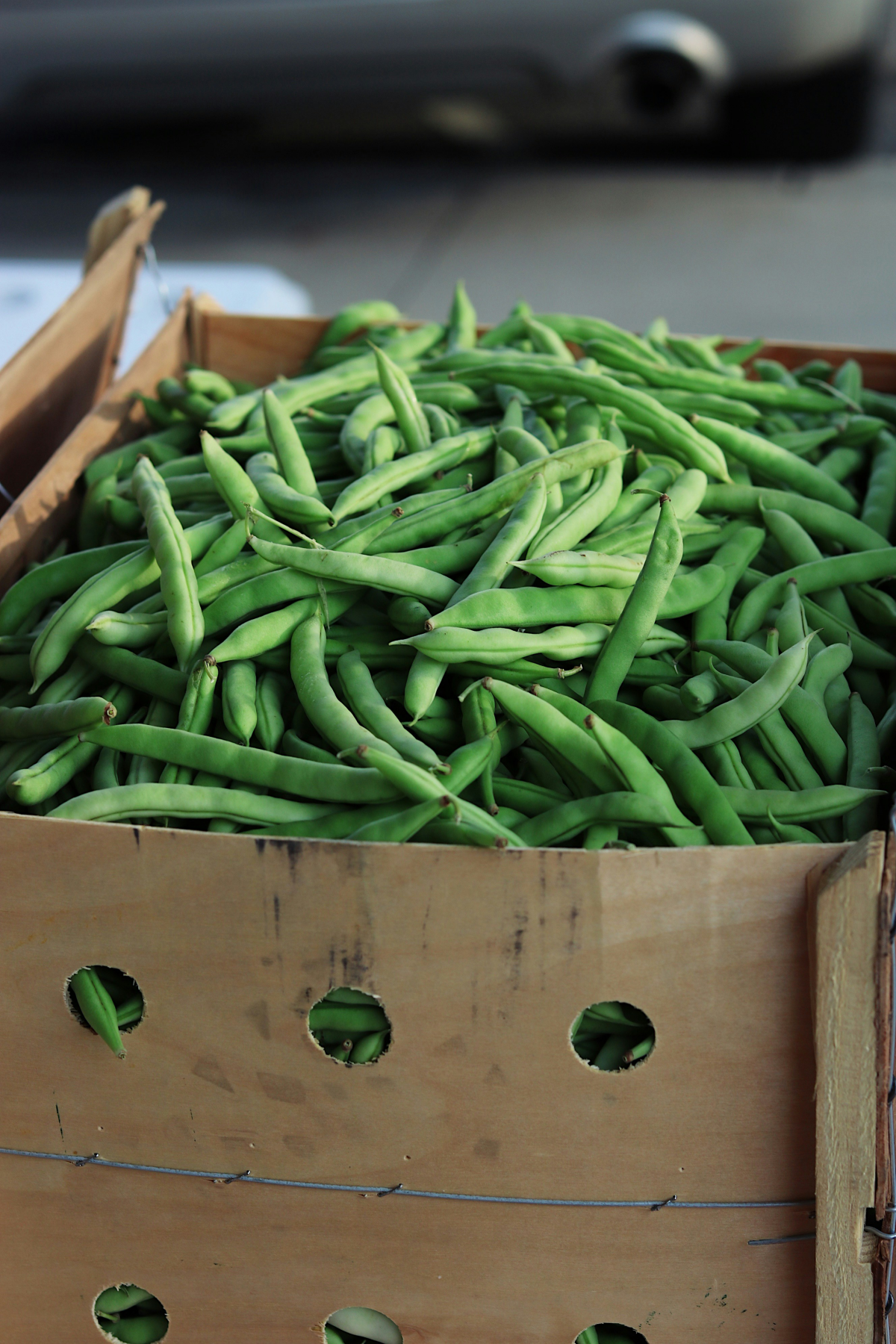
By the way, those cool purple beans? They contain the same kind of antioxidant found in blueberries. But here’s a fun magic trick: when you cook them, the heat breaks down the purple pigment, and they turn green right before your eyes! It’s a great bit of kitchen science to show kids.
Sourcing and Storing for Maximum Freshness
Great cooking starts with great ingredients. It’s a cliché because it’s true.
Your best bet is always a farmers’ market, where you can ask the grower when the beans were picked. Beans picked that same morning will taste a million times better than ones that have been sitting in a truck for a week. In the grocery store, just use your senses. Look for that vibrant color and firm snap, and avoid any with brown spots or wrinkles. If you can see the individual beans bulging through the pod, it’s over-mature and will probably be tough.
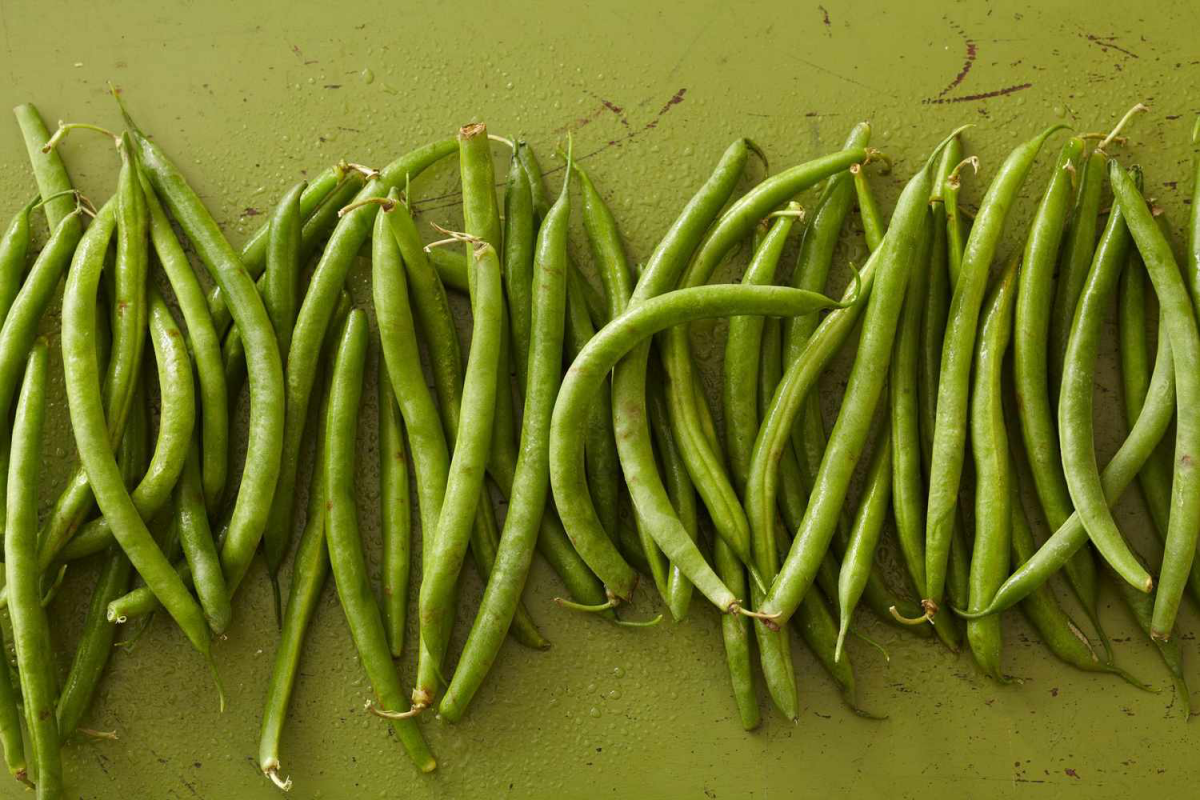
So, fresh, frozen, or canned? I get this question a lot.
- Fresh: In-season, local, and just-picked beans are the undeniable champion. Nothing compares.
- Frozen: Don’t sleep on frozen beans! They are usually flash-frozen within hours of being picked, which locks in nutrients and texture. A high-quality frozen bean is often a much better choice than a sad, old “fresh” bean at the store.
- Canned: Canned beans are the softest. The canning process cooks them until they’re very tender, which some people love for a classic green bean casserole. Just look for low-sodium versions and give them a good rinse.
Once you get fresh beans home, store them unwashed in a plastic bag (maybe with a few holes poked in it) in your fridge’s crisper drawer. I like to toss a single dry paper towel in the bag to absorb any extra moisture. They should stay crisp for about a week.
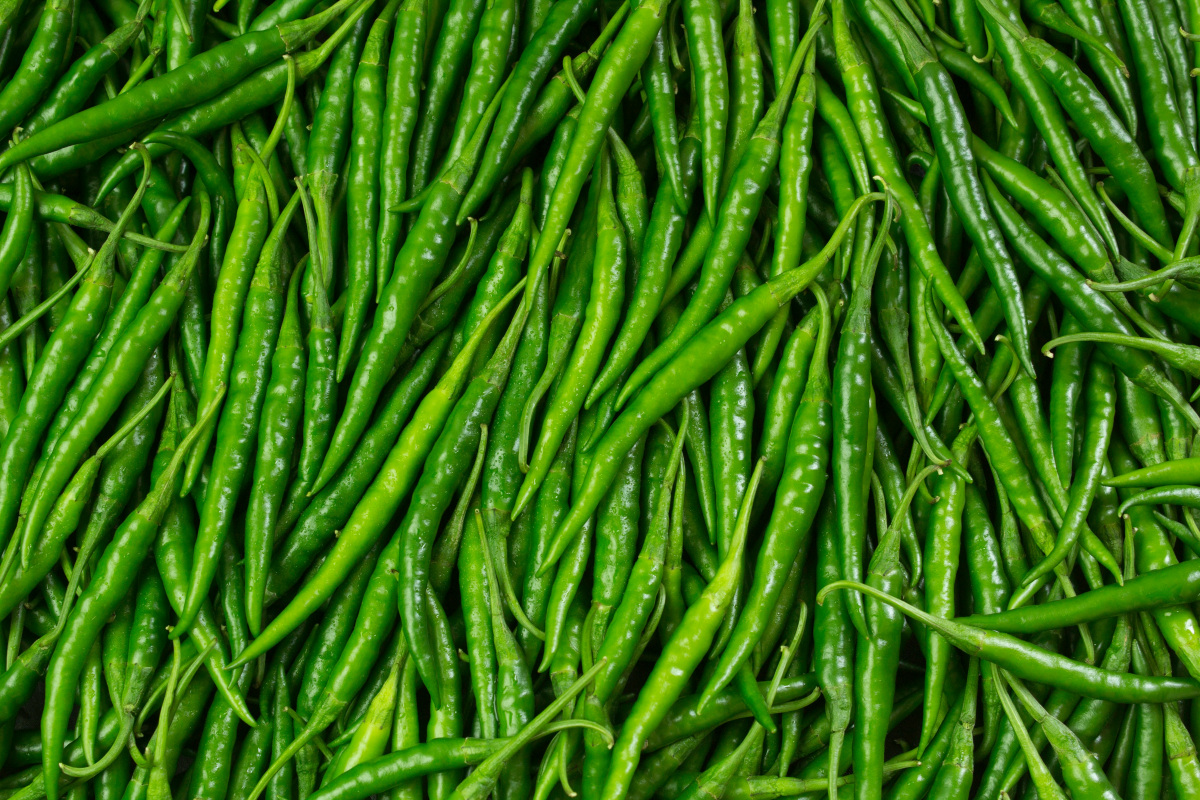
Oh, and here’s a great meal-prep hack: You can blanch and shock a full pound of beans on Sunday, dry them well, and keep them in a sealed bag in the fridge. They’re ready to be thrown into a hot pan for a 2-minute sauté all week long. Game-changer.
The Right Way to Prep and Cook
The biggest crime against green beans is overcooking them. It turns them an ugly olive-drab color, makes them limp, and ruins that fresh, grassy flavor. Here’s how to avoid that.
Trimming and Cutting
After a good rinse, it’s time to trim the ends. Don’t do it one by one! Grab a big handful, line up all the stem ends on your cutting board, and slice them off in one clean cut with a chef’s knife. Flip the bunch around and do the other side. You just turned a 10-minute job into a 1-minute job. You’re welcome.
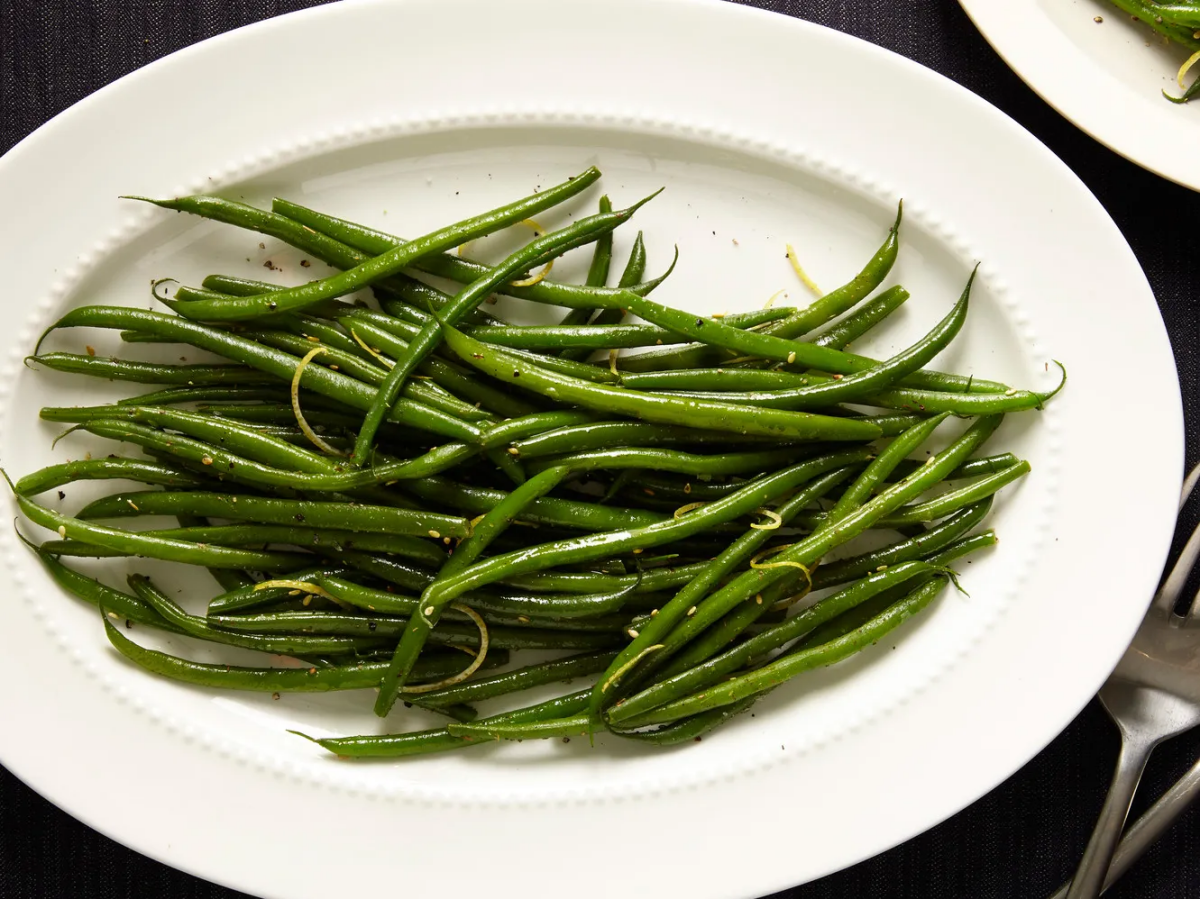
Blanching: The Golden Rule
This is it. This is the secret to perfect green beans every single time. It locks in their vibrant color and gives them that ideal tender-crisp texture.
My #1 Tip for Better Beans Tonight: If you do nothing else, salt your boiling water like it’s the sea (at least 1 tablespoon of salt per quart of water). It seasons the beans from the inside out and is the single biggest flavor booster.
Here’s the method:
1. Get a big pot of that heavily salted water to a rolling boil.
2. Have an ice bath ready (a big bowl of ice and cold water).
3. Drop your beans into the boiling water. Cook for 2-4 minutes, depending on their thickness (remember, only 90 seconds for haricots verts!). Start tasting them after 2 minutes.
4. The second they’re perfect, use a slotted spoon to pull them out and plunge them directly into the ice bath. This is called “shocking,” and it instantly stops the cooking process.
5. Once they’re cool, drain them well. Now they’re ready for anything.
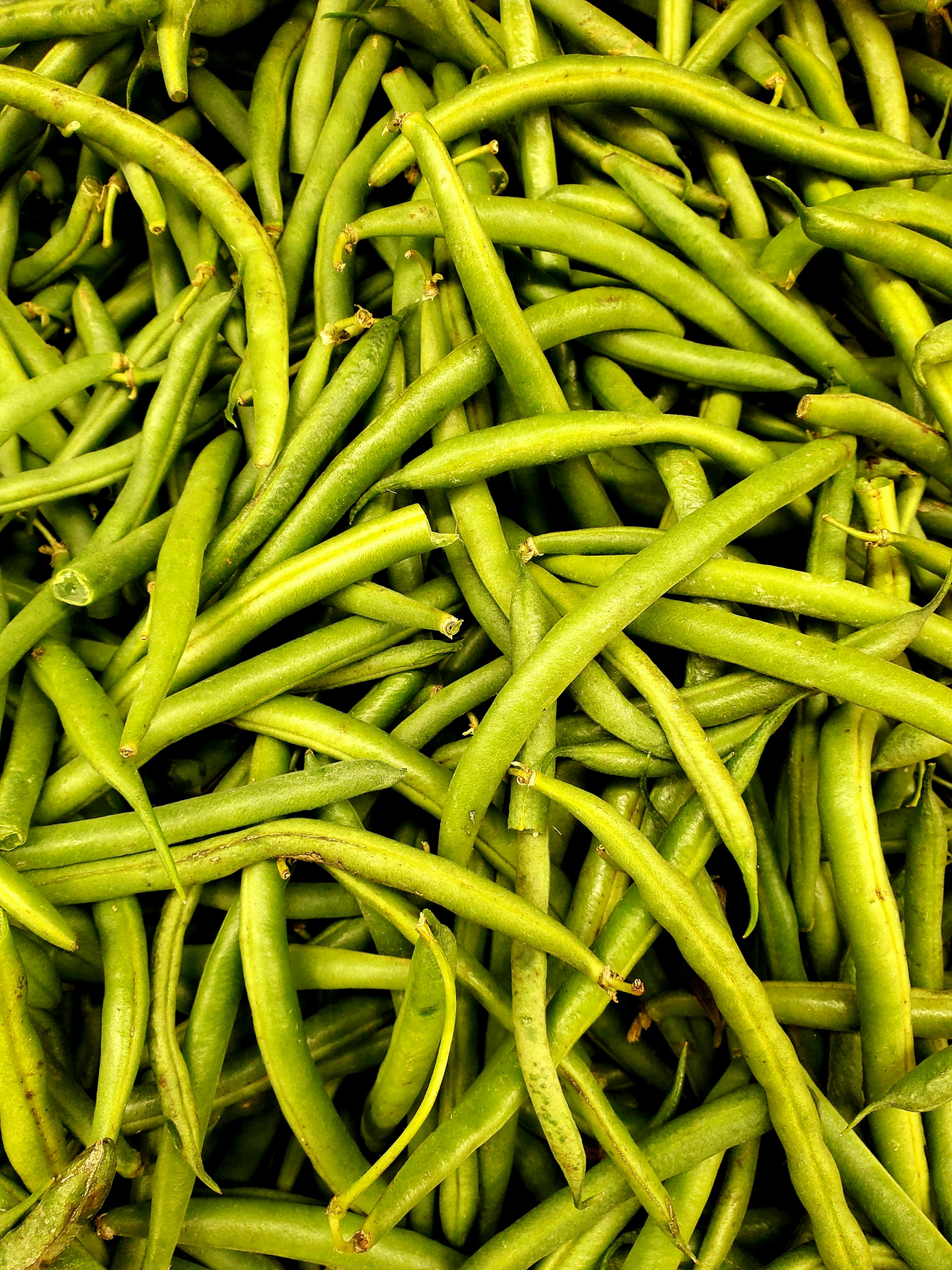
Sautéing and Roasting
For a deeper, nuttier flavor, go with dry heat. When you sauté, use a big pan over medium-high heat and don’t overcrowd it, or the beans will steam instead of brown. For roasting, just toss them with olive oil, salt, and pepper, spread them on a baking sheet, and roast at 400°F (200°C) for 15-20 minutes until they’re tender and getting a little crispy on the edges.
Preserving the Harvest
When you have a bounty of beans, you can save them for later. Pickled green beans, often called “dilly beans,” are a fantastic, tangy snack. But when it comes to canning, you need to be extremely careful.
Heads up! This is a critical safety warning. Green beans are a low-acid food. This means you CANNOT safely can them in a regular boiling water bath. A water bath doesn’t get hot enough to kill the spores that cause botulism, a rare but potentially deadly illness.
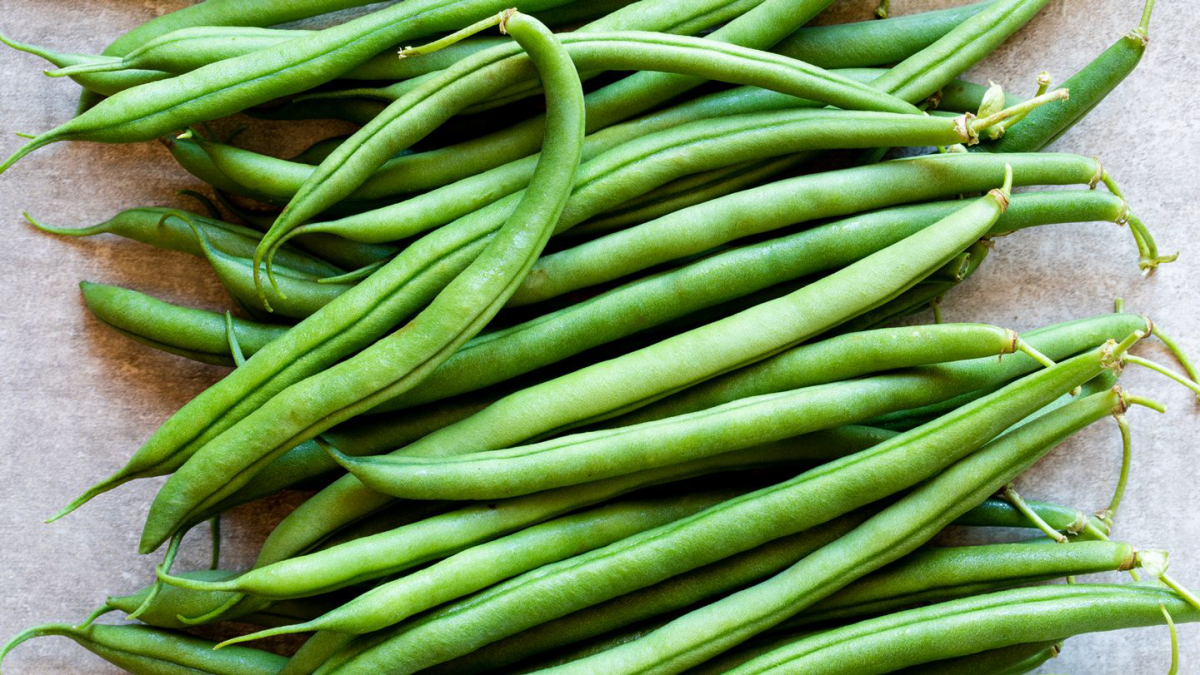
To safely can green beans, you must use a pressure canner, which reaches the necessary high temperatures. Please, always follow current, tested guidelines from a reliable source like the National Center for Home Food Preservation (NCHFP). Don’t risk it with an old family recipe you found online. When it comes to canning, safety is everything.
Honestly, freezing is the easiest and safest way to preserve them. Just follow the blanching and shocking steps above, dry the beans completely, and freeze them on a baking sheet before transferring them to a freezer bag. They’ll be delicious for up to a year.
Galerie d’inspiration
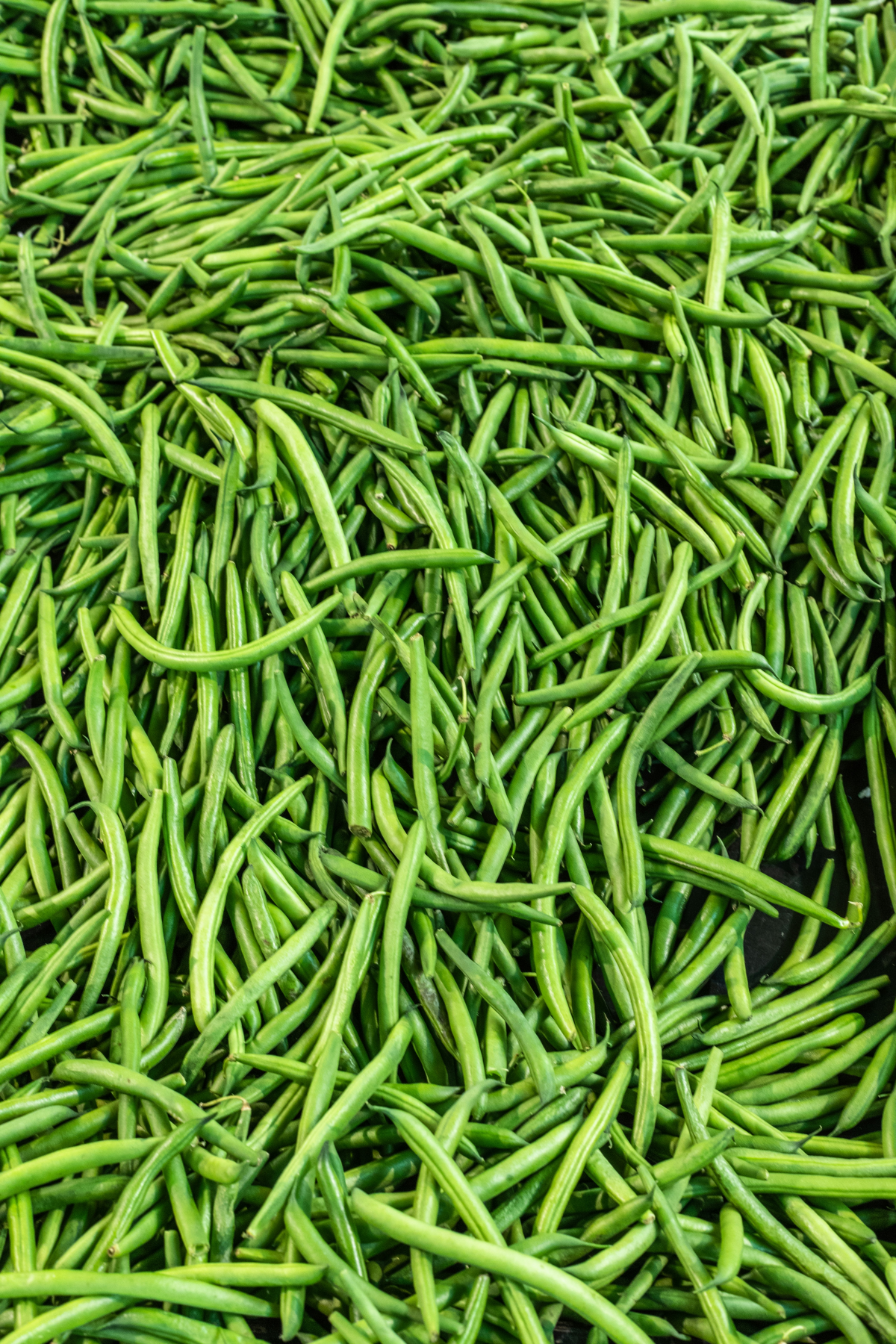
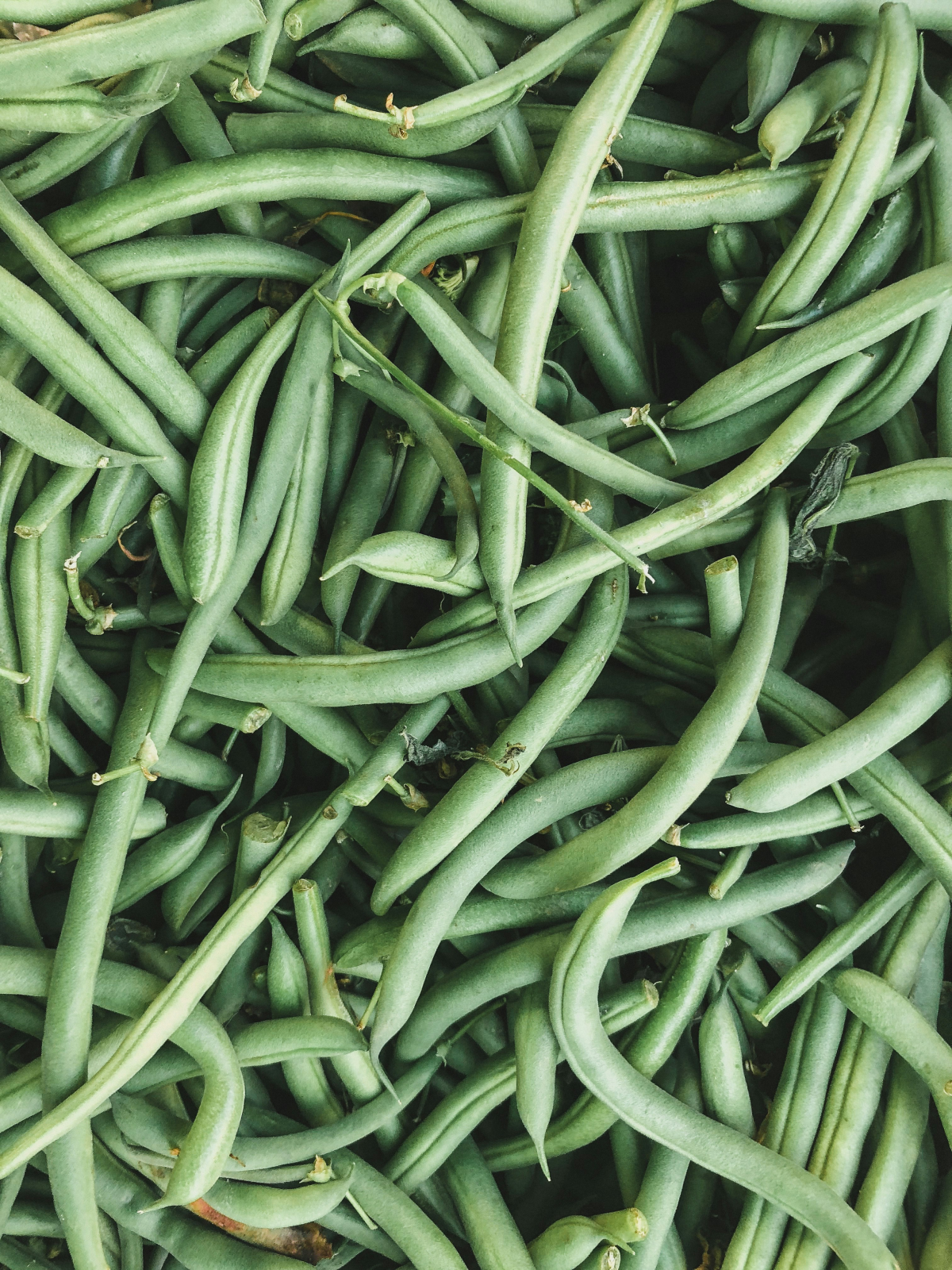
- Vibrant, jewel-toned green that doesn’t fade.
- A perfect crisp-tender bite, never mushy.
The secret used in professional kitchens? Shocking them. After boiling the beans in generously salted water for just 2-3 minutes, immediately plunge them into a large bowl of ice water. This halts the cooking process instantly, locking in both color and texture. It’s the single most important step for picture-perfect green beans every time.
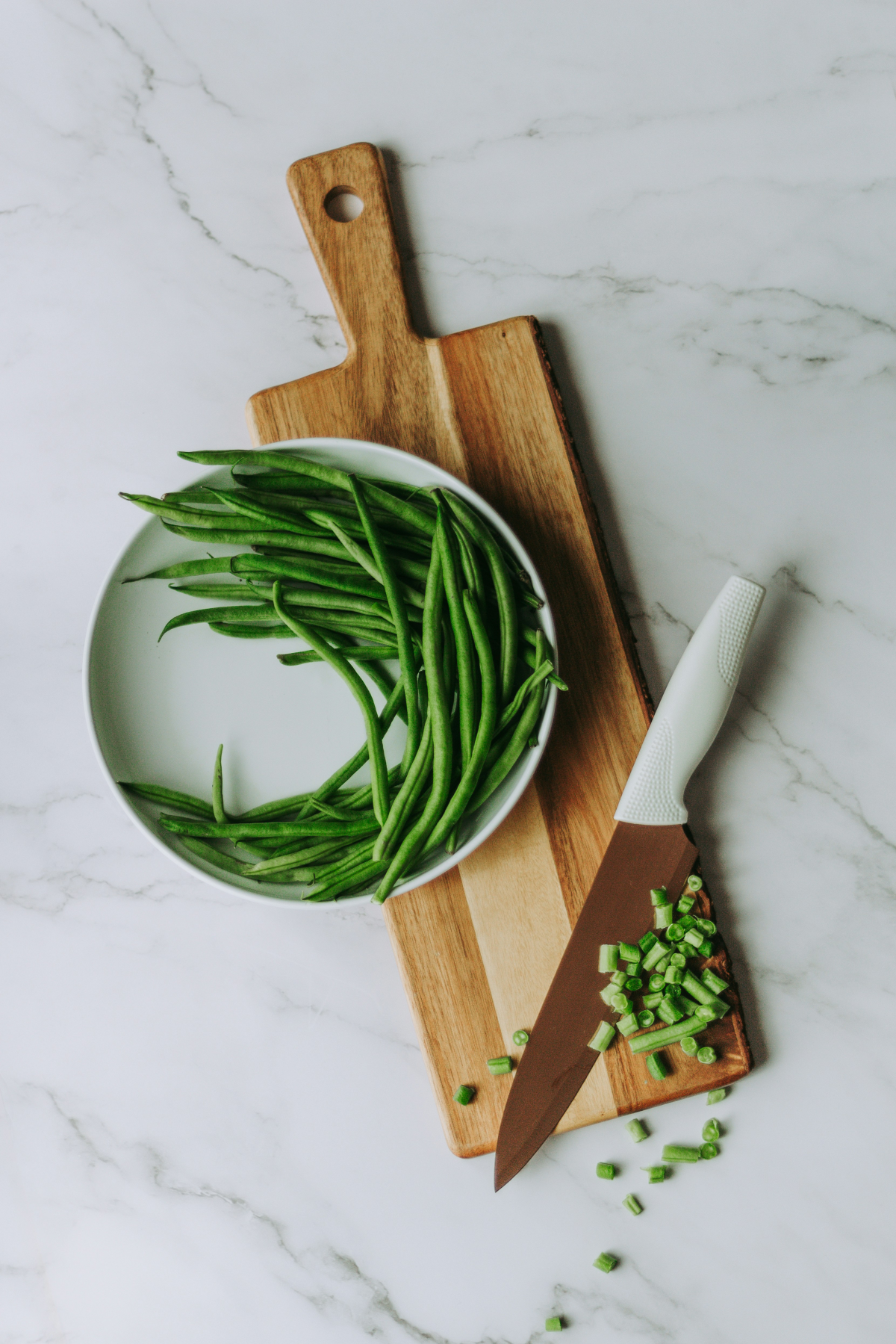
More than 130 varieties of green beans are known to exist.
While supermarkets often only carry one or two types, like the common ‘Blue Lake’ bush bean, farmers’ markets are a treasure trove. Look for the elegant and slender French ‘Haricot Vert’, the striking purple-podded ‘Royal Burgundy’ (which turns green when cooked!), or the flat, wide Italian ‘Romano’ bean, which is perfect for braising.
For a Quick Sauté: Choose slender, young beans. Their lower water content means they’ll blister and brown quickly in a hot pan with a bit of olive oil and garlic, keeping a pleasant snap.
For a Slow Braise: Opt for larger, flatter beans like Romano. Their sturdier structure holds up beautifully to long, slow cooking in a tomato or broth base, becoming meltingly tender without turning to mush.
Choosing the right bean for the job is half the battle won in the kitchen.










